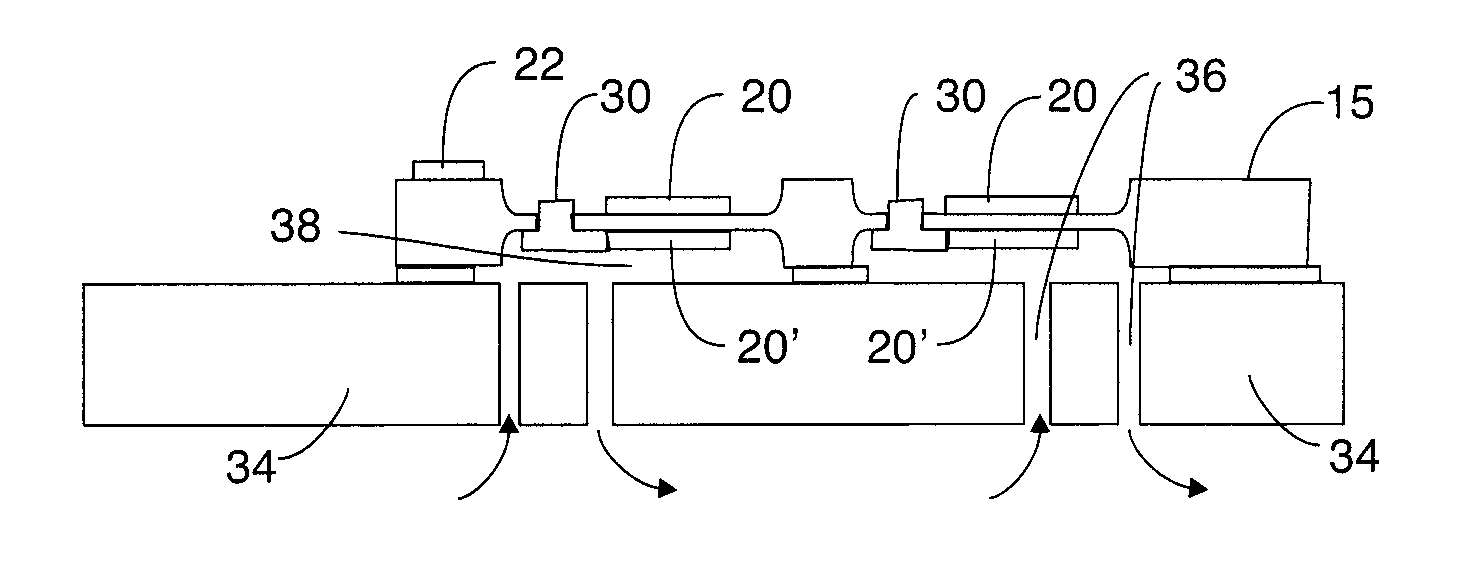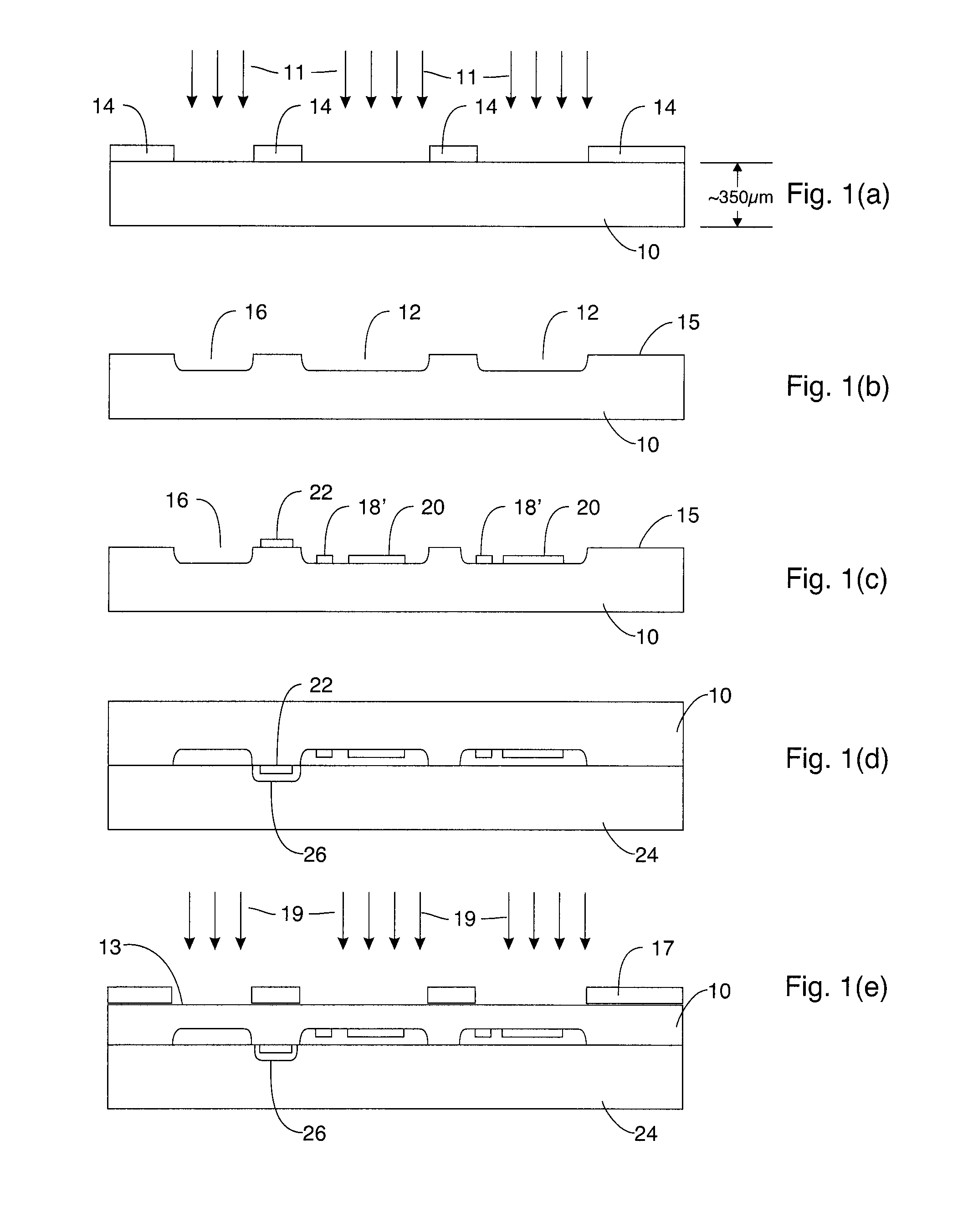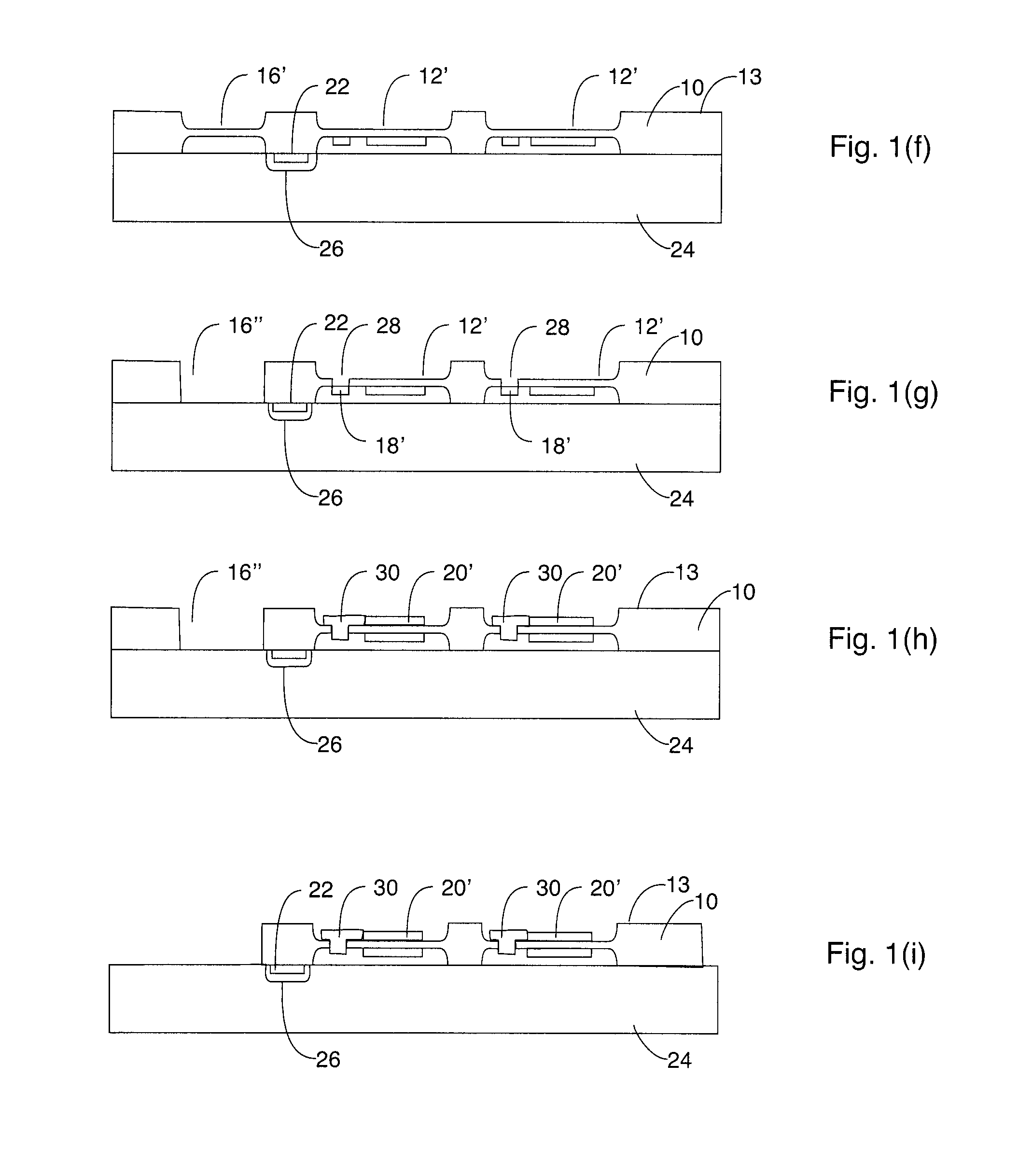Resonator with a fluid cavity therein
a quartz-based resonator and fluid cavity technology, applied in the direction of fluid pressure measurement, fluid tightness measurement, specific gravity measurement, etc., can solve the problems of difficult alignment of tape and quartz resonators, difficult operation, and porous resonators which are not suitable for liquid isolation, etc., to achieve greater sensitivity
- Summary
- Abstract
- Description
- Claims
- Application Information
AI Technical Summary
Benefits of technology
Problems solved by technology
Method used
Image
Examples
Embodiment Construction
[0015]FIGS. 1(a)-1(l) depict, in a series of side elevational views, steps which may be used to make the sensor described herein. These elevation views are taken along a section line 1-1 depicted in FIG. 2.
[0016]The formation of the disclosed sensor starts with a piezoelectric quartz wafer 10 preferably 3″˜ 4″ in diameter, AT-cut, with a thickness of preferably about 350 microns. As shown in FIG. 1(a), a mask 14 in combination with a dry plasma etch 11 (to prevent the formation of etch pits), are preferably used to form inverted mesas 12 (see FIG. 1(b)) etched in a top or first surface of wafer 10. Mask 14 is preferably formed of a thick resist or metal such as Ni or Al. In this connection, a solid layer of Ni or Al is may be put down and then a conventional photo-mask may be used to etch the Ni or Al in order to make mask 14 out of that metal. The preferred approach is to electroplate Ni onto a resist mold to form mask 14. This dry plasma etch 11 through mask 14 is optional, but is...
PUM
| Property | Measurement | Unit |
|---|---|---|
| frequency | aaaaa | aaaaa |
| thick | aaaaa | aaaaa |
| frequency | aaaaa | aaaaa |
Abstract
Description
Claims
Application Information
 Login to View More
Login to View More - R&D
- Intellectual Property
- Life Sciences
- Materials
- Tech Scout
- Unparalleled Data Quality
- Higher Quality Content
- 60% Fewer Hallucinations
Browse by: Latest US Patents, China's latest patents, Technical Efficacy Thesaurus, Application Domain, Technology Topic, Popular Technical Reports.
© 2025 PatSnap. All rights reserved.Legal|Privacy policy|Modern Slavery Act Transparency Statement|Sitemap|About US| Contact US: help@patsnap.com



